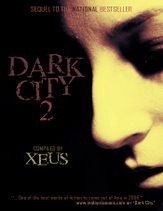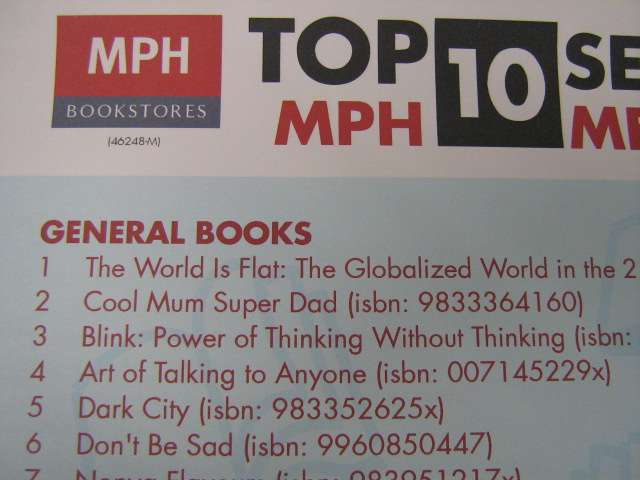Multi character story arcs

I must say I've gotten addicted to Heroes on StarWorld. The premise is simple - a selection of everyday people suddenly find they have superpowers. What do they do with them? Do they tell their best friend? Do they try to do good? Or are they more involved in using their newfound powers for their own gains?
As the series evolves, the heroes find they are not the people they started out as, and they are part of a greater evolutionary whole.
What makes Heroes so compelling is that you can see yourself or your friends in a bit of every character. You have:
1. characters who use their powers for personal gain - the funniest of them all, Hiro Nakamura from Tokyo, who speaks only Japanese (subtitled), teleports into a women's toilet and uses his time freezing abilities to cheat at casinos. But all the same, he genuinely cares about stopping
New York from Armageddon.
2. characters who are genuinely concerned about helping other people - the LA cop, Matt, starts off as a do-gooder. But his telepathy lands him into trouble instead. The other cops think he's the
serial killer who has been removing people's skulls, otherwise how does he know so much
about what's happening around him? Later on, he gets smarter, decides do-gooding is not all that it's cut out to be and uses his telepathy to help him understand his wife better (thus, personal gain.)
I like the way none of these characters are pigeon-holed into their niches.
So what can we learn from the multi-character arcs in Heroes?
1. Establish wonderful, identifiable characters, all with good points and flaws of their own. You reader must be able to identify with them - the worried mother (who happens to be a stripper), the cheerleader who just wants to be normal and to find her real parents, the druggie painter who chooses to do something about the future, the good-hearted hospice nurse and his sleazy politician brother etc.
None of them are larger than life a.k.a Batman.
2. Don't reveal too much about the backstory of each character from the onset. Part of the suspense for the viewer is discovering them. Heroes has an episode titled '6 months ago' where much of the backstories are explained. It only comes on after Episode 10!
3. There must be a central unifying character with all these other characters. In Heroes, this is the dishy Indian professor from Calcutta, Mohinder Suresh, who flies to New York to uncover the secrets behind his father's life and death.
He introduces us all to the concepts and characters of Heroes so we're never lost.
4. After the 2nd episode (or chapter), your characters all have established themselves and you
can fly them off on their own story arcs without worrying that the audience will be lost. Hey, this works too for the Amazing Race!
5. There must be one major overlying story arc for all the characters to work to. In Heroes, it is New York going into Armageddon on Nov 18th, 1 month after the story starts.
There is so much we can learn from hit TV series.
How would you establish your book with multi character arcs?



10 comments:
Xeus - sounds like an interesting series. Does this mean I can now watch more TV so that it'll help my writing? :)
TH, it's all in the name of serious reseach :)
But honestly, I find myself analysing even TV and movies in addition to books - what to avoid, what not to avoid etc.
It's Chinese New Year now and it's a pity you aren't here otherwise you're thrice welcome to my house...
I would probably go for an ensemble effect like in the films Magnolia and Happy Endings. I love the way the characters would just interact in ways the viewers/readers would not expect.
It takes a lot of planning though, and that is the current difficulty I'm having with my stories. I tend to write off the cuff, very spontaneously.
Now trying hard to put to writing a story idea I have for Dark City 2... ;)
Kenny, as you go into professional writing, you will find that you have to plan a little outline. Not too much, otherwise it won't be fun, but you more or less would be able to tell what happens at the end :)
Dark City 2 has a closing date of Feb 28th, which means I will be editing after that. But if you can give me your story during my edits in March, I can consider it. If not, it can always go into Dark City 3.
Hello, Xeus. I'm Jacob. Have you received my story yet?
Yes, I have. Sorry, Jacob, for forgetting to send a receipt. Haven't read it yet :) Chinese New Year fever and all.... Will be able to settle down this weekend.
Happy CNY, Xeus!
Thanks for the explanation. I'm gonna do my best to get it to you by the deadline though. ;)
Perhaps what I have to do here is change my usual process and plan an outline first, as you say. Afterwards, I can still apply the same spontaneous writing style within the outline.
P.S. Currently designing the poster for the next MPH Breakfast Club, featuring Lydia Teh and yourself. Will email it to you once it's done.
Kenny, you are such a dear :)
You know, you should turm to designing professional book covers. Interested? It pays quite well and publishers are always dying for illustrators.
to have someone having the ability to stop time and space by mere evolution of the brain is bit.... too over-fiction.
Zewt, maybe there should be a new category of fiction...overfiction :)
Post a Comment